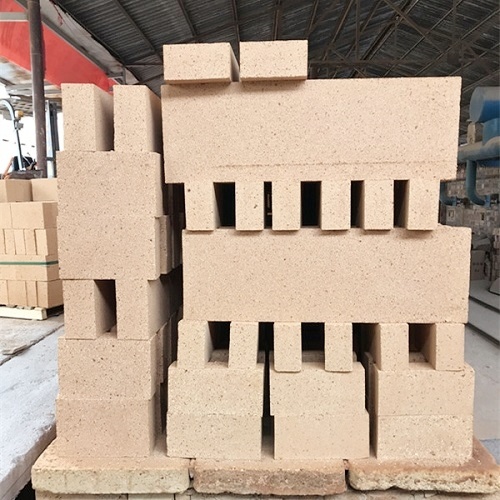Thermal shock resistant clay bricks
Classification:
Product Introduction
Thermal shock resistant clay brick is a refractory material with excellent performance, which is characterized by good resistance to damage under the condition of rapid temperature changes. Here are some key pieces of information about thermal shock resistant clay bricks:
1. Definition: Thermal shock resistant clay brick refers to fired clay products with good thermal shock performance.
2. Classification: According to the GB/T 34188-2017 standard, thermal shock resistant clay bricks are divided into two grades: RZN-42 and RZN-40 according to physical and chemical indicators. In the grade, R, Z and N are the initials of Chinese pinyin for heat, vibration and viscosity, and the number is the mass fraction of aluminum oxide.
3. Technical requirements: The technical requirements of thermal shock resistant clay bricks include chemical composition, apparent porosity, compressive strength at room temperature, load softening temperature, heating permanent line change, etc.
4. Shape and size: The shape and size of the brick should comply with the provisions of GB/T 2992.1, YB/T 4198, YB/T 5012, YB/T 5110 and YB/T 5113, and can also be produced according to the drawings provided by the party.
5. Thermal shock resistance: The thermal shock resistance of thermal shock resistant clay bricks is their ability to resist damage under the condition of rapid temperature changes, which is one of the important performance properties for refractory bricks. The thermal shock resistance depends on the chemical mineral composition and microstructure, and is generally worse than that of clay products.
6. Influencing factors: The thermal shock resistance of refractory bricks mainly depends on the microstructure, thermal expansion, thermal conductivity and elastic modulus of the product. Increasing the number of critical and coarse particles, improving the thermal conductivity, decreasing the elastic modulus and increasing the structural strength can all improve the thermal shock resistance of refractory bricks.
7. Test method: The test method of thermal shock resistance includes the heating-cooling method, that is, the sample is put into a high-temperature furnace for heat preservation and then quickly taken out and quenched in water or air, and repeated to the specified number of cycles to observe the damage or determine the retention rate of flexural strength.
Thermal-shock resistant clay bricks are widely used in various high-temperature kilns due to their excellent thermal shock resistance, especially in environments with frequent temperature changes.
| Projects | Physical and chemical indicators | ||
| RZN-42 | RZN-40 | ||
| Al2O3/% | ≥ | 42 | 40 |
| Fe2O3/% | ≤ | 2.0 | 1.5 |
| Apparent porosity/% | ≤ | 20 | 16 |
| Compressive strength at room temperature/Mpa | ≥ | 40 | 70 |
| 0.2Mpa load softening temperature T0.6/℃ | ≥ | 1420 | 1450 |
| Heating Permanent Line Change % | U-L | 1450℃×2h -0.3~0.1 | 1350℃×2h -0.5~0.1 |
| Thermal shock resistance/time(1100°C,water-cooled) | ≥ | 20 | 10 |
| 0.2Mpa creep rate/% (1250°C, 50h) | ≤ | 0.8 | / |
Key words:
Thermal shock resistant clay bricks
clay bricks
Related Products
Product inquiry


